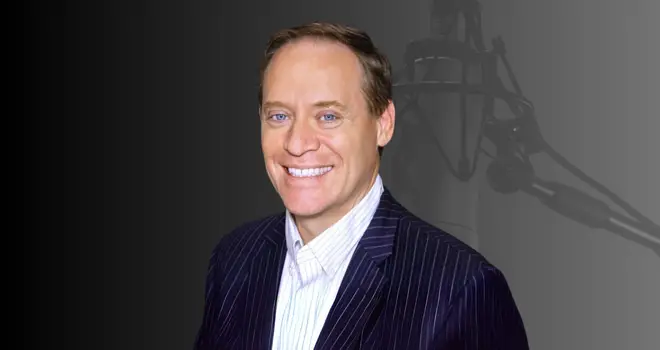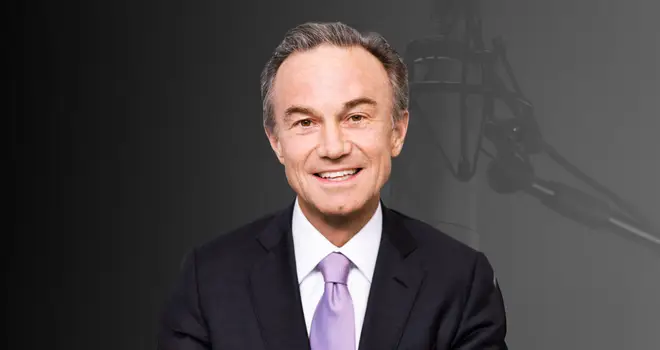Recession and inflation, two powerful economic indicators, lock horns in a delicate dance that impacts economies globally. A tug in one direction, say a rise in prices for daily essentials symbolizing inflation, often instigates an inverse pull towards negative economic growth, or recession. Yet, while we might anticipate this seesaw interaction, sometimes they surprise us by co-existing during periods of stagflation. This subtle interplay guides our journey into untangling the complexities of these economic phenomena.
Overview of Recession and Inflation
Recession and inflation are two substantial concepts in the economic landscape, impacting everything from prices at the grocery store to stock market performance. Recession occurs when the overall economic activity, measured by indicators like gross domestic product (GDP), experiences negative growth over an extended period. This slowdown is often accompanied by increased unemployment rates as companies cut costs by laying off workers.
Understanding Recession
The National Bureau of Economic Research (NBER) is responsible for officially declaring a recession based on data from various sectors of the economy. It’s not a single factor but a complex pattern of declines occurring across industries, lasting for several consecutive months. The 2008 financial crisis is a notable example of a recession, marked by widespread layoffs, drops in consumer spending, and declining housing markets.
Inflation Dynamics
On the other hand, inflation refers to the general increase in prices for goods and services over time, leading to a decrease in purchasing power. A little inflation can indicate increased demand and higher company profits. However, uncontrolled high inflation can have serious repercussions for personal finances and overall economic growth if it surpasses the Federal Reserve’s target rate of around 2%.
Interplay Between Recession and Inflation
What’s interesting is how these two economic waves interact with each other. While recessions tend to cause prices to fall due to decreased demand, certain factors might result in exceptions like the stagflation experienced in the 1970s, signaling a simultaneous surge in both inflation and recession.
On the other side, inflation can itself contribute to a recession if consumers drastically reduce spending or if the Federal Reserve raises interest rates excessively.
So, comprehending these economic tides not only enables us to navigate through shifting market conditions but also empowers us to make informed decisions about investments, personal finance, and policy-making.
With this fundamental comprehension of recession and inflation dynamics, we are now equipped to probe deeper into their intricate relationship and their broader impact on various sectors of the economy.
Unravelling Recession and Inflation Connection
To truly comprehend the complex association between recession and inflation, it’s essential to look into historical data to illustrate how these two forces have interacted in different periods. By examining historical patterns, we can gain valuable insights into the correlation between recessions and inflation, observing instances where high inflation contributed to a recession and vice versa.
Through carefully examining historical perspectives, we can observe how high inflation during times of economic hardship has had detrimental effects on economies across various eras, providing invaluable knowledge applicable to our current understanding of the relationship between recessions and inflation.
Impact on Asset Prices
As we delve into the impact of recession and inflation on asset prices, it becomes evident that these economic phenomena wield substantial influence over the value of assets. During a recession, inflation can erode the value of assets, engaging in a tug-of-war with economic growth and posing significant challenges for investors and individuals as their wealth diminishes in real terms.
For instance, consider the real estate and stock markets—two key areas where the impact of inflation during a recession is keenly felt. Inflated prices from high inflation rates can drive down the purchasing power of prospective property buyers. Simultaneously, the stock market faces volatility as the erosion of asset values due to high inflation adds another layer of complexity to an already uncertain economic landscape.
In contrast, recessions can result in deflation, which impacts asset prices in distinctive ways. Deflation during a recession exerts downward pressure on asset prices, causing real estate values and stock prices to plummet. This downward trajectory further compounds the challenges faced by investors and individuals grappling with the financial consequences of a recession.
Understanding how recession and inflation impact asset prices underscores the importance of closely monitoring these economic indicators, particularly for investors seeking to navigate volatile market conditions. As we explore the profound implications of these interwoven economic forces on asset prices and historical trends, it becomes increasingly clear that the relationship between recessions and inflation is far from straightforward.
Inflation’s Tangible Effect on Economic Health
Inflation can be deceptively impactful. At first, it might seem like just a small rise in prices, but its reach can extend far and wide, affecting everyone, from local businesses to global investors. Let’s dissect some of the most critical areas where inflation leaves its mark.
Consumer Purchasing Power
When prices go up, your money doesn’t stretch as far. Consider this: could you buy as much with $100 today as you could have 10 years ago? Probably not. This is why inflation erodes the purchasing power of your money. You might have noticed that grocery bills keep growing, or perhaps the cost of filling up your car has been gradually increasing. It’s all due to inflation.
As consumer purchasing power diminishes due to inflation, people end up with less money to spend on the things they need and want. Let’s say you were saving up for a new laptop, but suddenly, the price went up by 5%. That means you either have to save for longer, save more money, or find a cheaper alternative. These adjustments add up for everyone and can significantly impact their quality of life and standard of living.
During periods of high inflation, statistics show that the average worker’s wages often fail to keep pace with rising prices, leading to a noticeable reduction in their purchasing power.
Interest Rates and Investments
Let’s talk about how all this affects other kinds of investments, like retirement funds and savings accounts.
In response to high inflation, the central bank often increases interest rates to try to slow down spending and cool off the economy.
This means that if you have money saved in a regular bank account earning interest, a higher interest rate sounds good, right? But here’s where it gets tricky. In reality, the increase in interest rates might not keep up with inflation. As a result, your savings will be growing slower compared to how fast prices are rising. Plus, if you’ve taken out loans with variable rates, they could become more expensive as well.
Investors also face difficult choices during times of high inflation. They might opt for riskier investments in pursuit of higher potential returns just to stay ahead of inflation, or they might choose more stable investments that offer less return overall.
The tangible effects of inflation on consumer purchasing power and investment decisions underscore its influence not just on individual households but also on the broader economic landscape.
Understanding the intricate interplay between recession and inflation provides vital insights into economic dynamics. Now, let’s delve into the triggers of inflation during economic decline.
Triggers of Inflation During Economic Decline
During a recession, supply chain disruptions can profoundly impact the economy and contribute to price rises. When goods become scarcer due to these disturbances, their prices naturally increase due to their limited availability.
The concept is simple: when there’s less of something people want, they are willing to pay more for it. Recent examples, like the global supply chain interruptions caused by the COVID-19 pandemic, have vividly demonstrated how quickly shortages can lead to price hikes. The lack of materials and components not only slowed down production but also drove up costs for producers and end consumers alike.
In 2020 and 2021, industries heavily reliant on imported goods from countries severely affected by the pandemic faced challenges obtaining essential components. This scarcity led to delayed production and reduced output, causing an imbalance between demand and supply, resulting in higher prices for finished products.
Moreover, it’s crucial to pay close attention to how government responses and monetary policies during economic downturns can influence inflation rates. When governments increase spending or implement measures like quantitative easing during recessions, they typically inject more money into the economy. This increase in liquidity can lead to a surge in consumer demand.
The influx of government money into the economy aims to stimulate growth by encouraging more spending and investment. However, during an economic decline, businesses may face difficulties meeting this increased demand due to reduced capacity or constraints stemming from supply chain issues, driving prices upward.
Government Response and Monetary Policies
Through quantitative easing and fiscal stimulus measures, central banks and governments aim to spur economic activity by boosting lending and expenditure. While these measures seek to alleviate financial strain during times of recession, they can inadvertently contribute to inflation by increasing the money supply within the economy.
For instance, the Federal Reserve’s response to the 2008 financial crisis included several rounds of quantitative easing aimed at lowering long-term interest rates and promoting borrowing and investment. Although these policies helped stabilize financial markets and encouraged spending, they also raised concerns about potential long-term inflationary pressures due to the substantial increase in the money supply.
It’s important to recognize that while these government interventions play a crucial role in stabilizing economies during downturns, they can simultaneously introduce inflationary risks if not carefully managed. As we navigate through periods of economic uncertainty and recovery, close attention must be paid to both short-term relief efforts and their long-term implications for price stability.
Understanding these intricate relationships between supply chain disruptions, government responses, and monetary policies offers valuable insights into the complex interplay between recessions and inflation.
Potential Outcomes of Recessions and Inflations
When a recession hits, its impact can vary widely. Job loss may be the fate of some, while others might struggle to keep up with higher prices. As discussed earlier, inflation tends to rise during a recession, leading to a decrease in purchasing power. This has numerous profound impacts on society and industries.
One significant consequence of simultaneous high inflation and recession is the increase in wealth disparity. During these times, people with lower incomes often experience the most significant impact. With the high cost of goods and services, coupled with job losses, those who are already struggling financially find themselves facing even greater challenges. Conversely, individuals or entities with substantial assets, including real estate or stocks, may see their wealth erode less due to inflation-resistant investments.
This situation often leads to an uptick in poverty rates. Families living paycheck-to-paycheck are hit hardest when their money doesn’t stretch as far. The strain increases for those who were already experiencing financial difficulties before the economic downturn.
Case studies from past recessions show that periods of high inflation and recession also pose risks to social stability. Communities may experience amplified stress on social safety nets or public welfare services, potentially straining relationships between citizens and their governments.
Navigate Economic Challenges: Start Your FREE Trial for Strategic Insights!
In times of economic uncertainty, navigating challenges with confidence is crucial. Begin your journey to strategic resilience with Rosenberg Research by activating your FREE trial today.
Gain access to insightful reports that offer strategic perspectives and actionable insights to help you make informed decisions during economic downturns. Rosenberg Research’s comprehensive analysis will be your guidepost through uncertain times, ensuring you stay well-informed and empowered in your investment strategy. Don’t just weather the storm – navigate it strategically with Rosenberg Research.
Start your FREE trial now and equip yourself with the tools needed for success in challenging economic climates.


